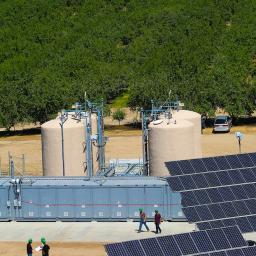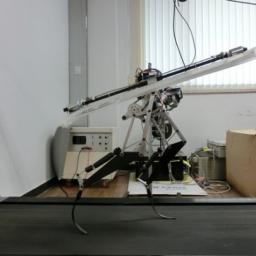
Really cool news about a recent
acquisition by Google . Skybox provides high-resolution photography from space and its imagery -- if made widely accessible -- could facilitate many new spatial-analytic studies going forward as daily time steps appear feasible with the Skybox satellite network.
From
the company website is this advertisement for their startup origins: "2009, Founders wrote the first Skybox business plan as part of a Stanford graduate entrepreneurship course, Spent 6 months working out of John's living room, Secured Series A financing of $3M from Khosla Ventures, Moved into a windowless 3,000 sqft office in Palo Alto, Began to attract, court, and hire the smartest people they knew to join the vision..."

The
2014 World Cup kicks off in
Brazil on Thursday. For the first time ever,
goal-line technology has been
installed across all twelve stadiums that will host the different world cup games. Three months before the 2010 World Cup in South Africa, FIFA head, Sepp Blatter,
dismissed the role for goal line technology in international competition, only to change his mind after several errors were made by the human referees . It will be interesting to see how this works out now that it has been introduced. Apparently, seven cameras are trained on each goal to determine when the ball crosses the line, each system had to correctly determine 2400 test cases to be considered ready to go, and the algorithm has the required capacity to notify the head referee within one second after a given incident via wireless communication to their wrist watch. Cool technology really.
And, whatever you think about FIFA and the World Cup, check out
this recent commentary from Jon Oliver to deepen your appreciation and have a laugh/cry while you're at it.

A Florida Scientist claims to have
found the secret of short, intense workouts.
In the last few years, the benefits of short, intense workouts have been extolled by both researchers and exercise fans as something of a metabolic panacea capable of providing greater overall fitness, better blood sugar control and weight reduction-all of it in periods as short as seven minutes a few times a week.
Now, in a new study, scientists from the Florida campus of The Scripps Research Institute (TSRI) confirm that there is something molecularly unique about intense exercise: the activation of a single protein.

The European Space Agency's
Venus Express probe is set to perform a series of
aerobraking manoeuvres over the next few weeks in the upper atmosphere of our twin planet. The spacecraft has been collecting data on the Venusian atmosphere in a polar orbit around Venus since 2006, but is scheduled to run out of fuel later this year. The aerobraking will plunge the craft deeper into the atmosphere and hopefully get some last minute data before its end of life.

Another week, another buffer overflow in a crypto library! This time,
GnuTLS is the culprit as it misses the length checks for the session ID in the ServerHello message. Because most server applications choose OpenSSL over GnuTLS, the list of affected packages is actually rather small - but make sure your systems are up to date regardless.

Apple
announced a new programming language yesterday at its yearly developer conference. With improvements in speed and ease of development, the new language aims to replace Objective C, Apple's previous language of choice.
As usual, software development in the new language is limited to the company's
XCode programming IDE available for no cost in OS X.

The last major problem of renewable power is energy storage for off-production times. The sun may go down at night, but our electricity demand continues. Towards solving this problem, EnerVault has created a
250-kilowatt iron-chromium redox flow battery at a
demonstration storage project in California's Central Valley.
One of the advantages of a flow battery is that the energy capacity can be expanded by installing larger tanks of the active material. Also, flow batteries are relatively inexpensive per kilowatt-hour compared to lithium-ion batteries and can provide power for multiple hours.
At less than $250 per kilowatt hour, redox flow batteries are cost comparable with gas-fired peaking power plants and are logical companions to renewable power generation.
 Really cool news about a recent acquisition by Google . Skybox provides high-resolution photography from space and its imagery -- if made widely accessible -- could facilitate many new spatial-analytic studies going forward as daily time steps appear feasible with the Skybox satellite network.
Really cool news about a recent acquisition by Google . Skybox provides high-resolution photography from space and its imagery -- if made widely accessible -- could facilitate many new spatial-analytic studies going forward as daily time steps appear feasible with the Skybox satellite network.






